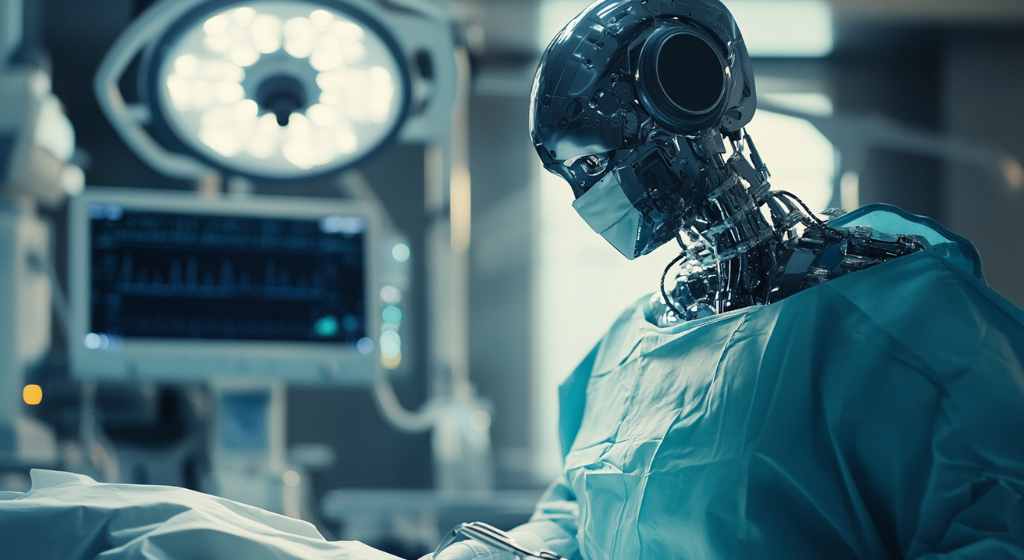
Johns Hopkins and Stanford researchers have trained surgical robots using imitation learning from surgeon-recorded videos, enabling them to perform procedures with human-like skill and marking a major advancement toward autonomous robotic surgery. (Source: Image by RR)
Johns Hopkins and Stanford Researchers Use AI to Revolutionize Robotic Surgery
Johns Hopkins University researchers, in collaboration with Stanford University, have successfully trained a surgical robot using imitation learning to perform procedures with the same skill as human surgeons, marking a significant advancement in medical robotics. Instead of programming each specific move, the team trained the robot using hundreds of videos recorded from wrist cameras on da Vinci Surgical System robots, which captured surgeons’ actions during procedures. This breakthrough, presented at the Conference on Robot Learning in Munich, moves robotic surgery closer to full autonomy, where robots could independently perform complex surgeries without human intervention.
As noted in hub.jhu.edu, the da Vinci robot was trained to execute three fundamental surgical tasks—manipulating a needle, lifting body tissue, and suturing—using a machine learning model similar to the architecture behind ChatGPT. Unlike text-based models, this system translates camera input into precise robotic movements by interpreting kinematics, a mathematical breakdown of motion. By focusing on relative movements instead of absolute actions, the researchers overcame inaccuracies in the da Vinci system, enabling the robot to generalize its learning to new environments and even recover from unexpected scenarios, such as picking up a dropped needle.
This innovation drastically reduces the time needed to train surgical robots, bypassing the traditional decade-long effort of manually programming each step for specific procedures. According to lead researcher Axel Krieger, the system can train robots to perform surgeries in a matter of days, accelerating the path to autonomous surgery while reducing medical errors and improving precision. The robot’s ability to adapt and perform tasks it wasn’t explicitly trained to do highlights its versatility and potential to revolutionize the field of robotic-assisted surgery.
The researchers now aim to expand their approach, training robots to perform full surgical procedures rather than isolated tasks, further enhancing their capabilities. With over 7,000 da Vinci robots in use globally and a vast archive of surgical data available for training, this development holds immense promise for transforming surgical practices. By leveraging imitation learning, the team has opened a pathway to safer, more efficient, and autonomous robotic surgery, potentially reshaping the future of medical care.
read more at hub.jhu.edu







Leave A Comment